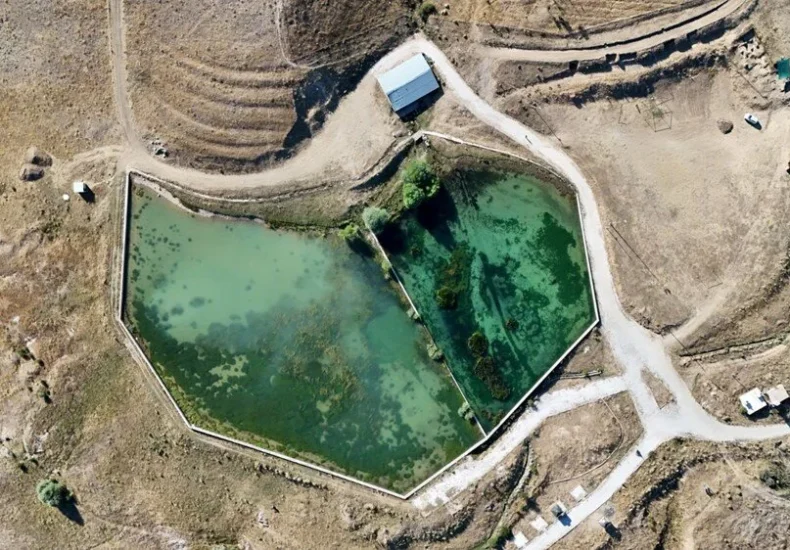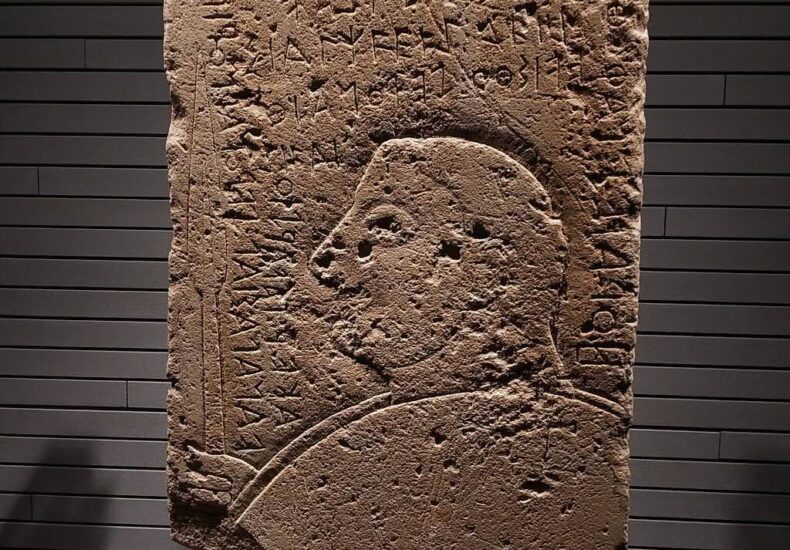
Türkiye’s Third-Largest Odeon Unearthed in Ancient City of Sagalassos
Excavations in the ancient city of Sagalassos, located in Burdur’s Ağlasun district, are revealing a monumental odeon buried nearly four meters underground. Archaeologists report that once fully unearthed, the structure will become the third-largest odeon in Türkiye, after those at Ephesus and Kibyra. A hub for music, politics, and civic life Listed on UNESCO’s World

2,000-Year-Old Roman Pool Still Supplies Water in Satala, Türkiye
In the Kelkit district of Gümüşhane, the Satala Ancient City houses a remarkable 2,000-year-old Roman pool that once served Roman legionaries and still meets the drinking and irrigation needs of the nearby Sadak village. Located in the heart of Satala, the pool is considered one of the most significant structures of the ancient city. While

The 1-Kilometer Main Street of Sillyon Ancient City Has Been Unearthed
ANTALYA – In Serik district of Antalya, the Sillyon Ancient City is revealing the layers of six major civilizations along its main street. Excavations, conducted year-round as part of the “Heritage for the Future” project, have uncovered a one-kilometer-long avenue that connects the city’s Hellenistic, Roman, Byzantine, Seljuk, Beylik, and Ottoman periods. From Mythical Origins

2,600-Year-Old Kaminia Stele: The Linguistic Mystery of the Northern Aegean
In the summer of 1885, on the windswept island of Lemnos, archaeologists uncovered more than just a gravestone near the village of Kaminia. This local stone stele, dating back to the 6th century BC, carried a secret preserved in its inscriptions: a linguistic mystery that has puzzled scholars for over two millennia. The Kaminia Stele

Baptistery Discovered in Antandros: From Roman Villa to Christian Rituals
A significant archaeological discovery has been made in the ancient city of Antandros, located in Türkiye’s Balıkesir province near the slopes of Mount Ida (Kazdağları). Excavations revealed that a structure originally built as part of a Roman villa was later converted into a baptistery following Christianity’s recognition as the official religion of the Roman Empire

3,000-Year-Old Cremation Burials and Ritual Fire Site Unearthed in Muğla, Türkiye
Archaeologists have uncovered a series of cremation burials dating back around 3,000 years at Beçin Fortress in Milas, Muğla, shedding new light on ancient funerary traditions in western Anatolia. The discovery was made during excavations led by Prof. Dr. Kadir Pektaş from Istanbul Medeniyet University. Remarkable Find Beneath a Medieval Bath The cremation burials were

Archaeologists Uncover One of the Earliest Known Streets at Canhasan 3, Central Anatolia
9,750-Year-Old Street Unearthed in Central Türkiye Challenges Neolithic Narratives Archaeologists in Türkiye have uncovered what may be one of the earliest examples of a street in human history—predating the iconic settlement of Çatalhöyük by nearly 750 years. The discovery was made at Canhasan 3 Höyük, a Neolithic mound in the Karaman province, revealing an organized

Temple Dedicated to Demeter Unearthed in Ancient City of Aigai: Nearly 1,000 Miniature Hydriae Discovered
Ongoing excavations at the ancient city of Aigai in the Yuntdağı region of Manisa’s Yunusemre district have brought to light a temple dedicated to Demeter, the Greek goddess of agriculture and fertility.The excavation is led by Prof. Dr. Yusuf Sezgin, Head of the Department of Archaeology at Manisa Celal Bayar University’s Faculty of Humanities and

2,000-Year-Old Bronze Arm with Ring on Finger Goes on Display for the First Time After 45 Years
A 2,000-year-old Roman bronze arm, featuring a ring on its finger, has gone on public display for the first time in 45 years at the İzmir Archaeology Museum. The artifact, discovered off the coast of Foça in 1980, had remained in storage until recently, when it underwent careful restoration. Museum Director Savaş Gürbüz highlighted the

Women Lead the Way in Excavations at Heraion-Teikhos, the “City of Hera” in Thrace
In Tekirdağ, northwestern Türkiye, archaeological excavations at Heraion-Teikhos—one of the most significant settlements of the Thracian civilization—are highlighting the vital role of women. Supported by the Ministry of Culture and Tourism under the “Heritage for the Future Project,” the dig is bringing ancient history to light with the help of local women workers. Located in
